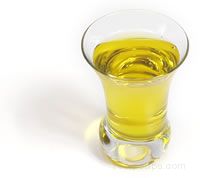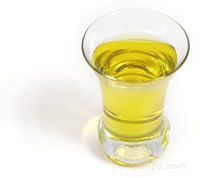|
Virgin Olive Oil
Virgin olive oil grades are produced in the same manner as extra virgin grades. The oil is not refined or processed after pressing. The natural acidity levels are greater than extra virgin grades, ranging from 1.5% to 3.3%. The flavor and aroma of virgin olive oil is of the highest quality. The oil obtained from the first pressing is the only olive oil that can be classified as virgin (or extra virgin, depending on the natural acidity level). |
|
Fine Virgin

|
Fine virgin grade is a high quality olive oil with a maximum acidity level of 1.5%. It is less expensive than extra virgin grades, which makes it an excellent substitute when budget is a consideration. |
|
Virgin

|
Virgin olive oil has a maximum acidity of 2% and can be used just like any of the higher grades. It is much more reasonably priced and is versatile in that it can be used generously in cooking and yet it has enough flavor to be used in salads or as a condiment. |
|
Semi-fine Virgin

|
Semi-fine virgin olive oil has a maximum acidity level of 3.3%. It has good flavor, but it is less tasty than higher grades. It has the same health benefits as any of the higher grades and is best used in cooking. |
|
Lampante Virgin
Lampante virgin olive is the lowest grade of virgin olive oil and is not fit for human consumption. It has a natural acidity above 3.3% and may also have an unpleasant taste and aroma. Lampante virgin olive oil is usually shipped to refineries for processing in order to remove the defects. (See, "Refined Olive Oil".) |

